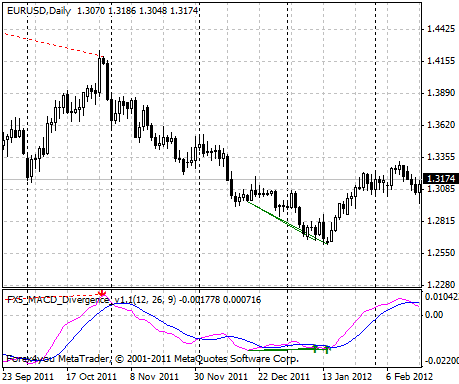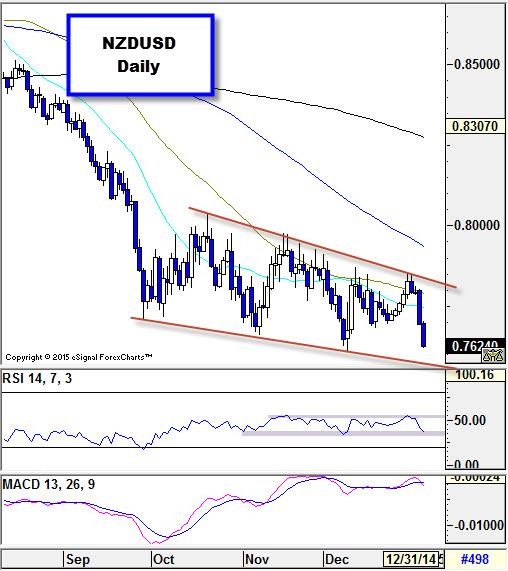Trading Divergences In Forex_2
Post on: 16 Март, 2015 No Comment

Moving Average Convergence/Divergence (MACD)
Developed by Gerald Appel, publisher of Systems & Forecasts, the Moving Average Convergence/Divergence (MACD) indicator is one of the simplest, most reliable, and most commonly used indicators available. The MACD is a momentum oscillator with some trend-following characteristics.
The most popular construction of the MACD first calculates the difference between two moving averages and plots that as the Fast line; A second Signal (trigger) line is then calculated from the resulting Fast line and plotted in the same frame as the Fast line. The standard MACD values for the Fast line are a 12-period exponential moving average and a 26-period exponential moving average and a 9-period exponential moving average for the Signal line.
Interpretation
The MACD is widely used as a trend-following indicator and tends to work most effectively when measuring wide-swinging market movements. There are three basic techniques for using the MACD to generate trading signals.
Crossovers: 1) Fast line/Signal line Crossover: A buy signal occurs When the Fast line crosses above the Signal line and a sell signal occurs when the Fast line crosses below the Signal line. 2) Fast line / zero Crossover: When the Fast line crosses above zero a buy signal is given. Alternatively, when the Fast line crosses below zero a sell signal is given.
Divergence: Looking for divergences between the MACD and price can prove to be very effective in identifying potential reversal and/or trend continuation points in price movement. There are several types of divergences:
Classic Divergence (aka: Regular Divergence)
* Bullish Divergence = Lower lows in price and higher lows in the MACD
* Bearish Divergence = Higher highs in price and lower highs in the MACD

Hidden Divergence (aka: Reverse Divergence, Continuation Divergence, Trend Divergence)
* Bullish Divergence = Lower lows in MACD and higher lows in price
* Bearish Divergence = Higher highs in MACD and lower highs in price
Overbought/Oversold Conditions: The MACD can be used to identify potential overbought and oversold conditions in price movements. These conditions are generated by comparing the distance between the shorter moving average and the longer moving average; if the shorter moving average separates dramatically from the longer moving average it may be an indication that price is over-extending and will soon return to more realistic levels.
The materials presented on this website are solely for informational purposes and are not intended as investment or trading advice. Suggested reading materials are created by outside parties and do not necessarily reflect the opinions or representations of Capital Market Services LLC. Please refer to our risk disclosure page for more information.














